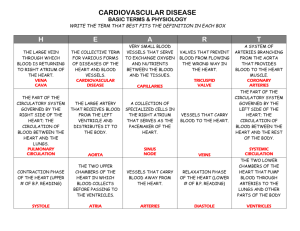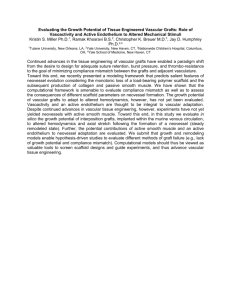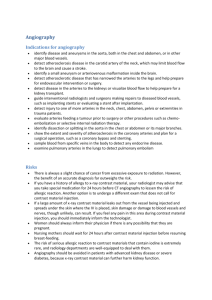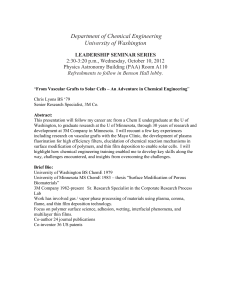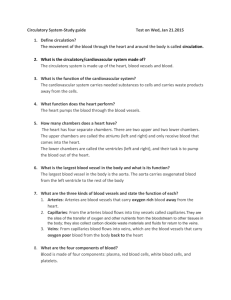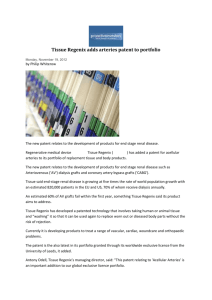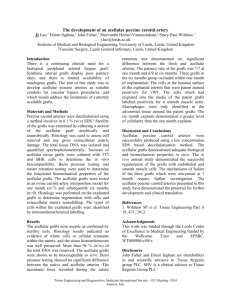Byzov D
advertisement
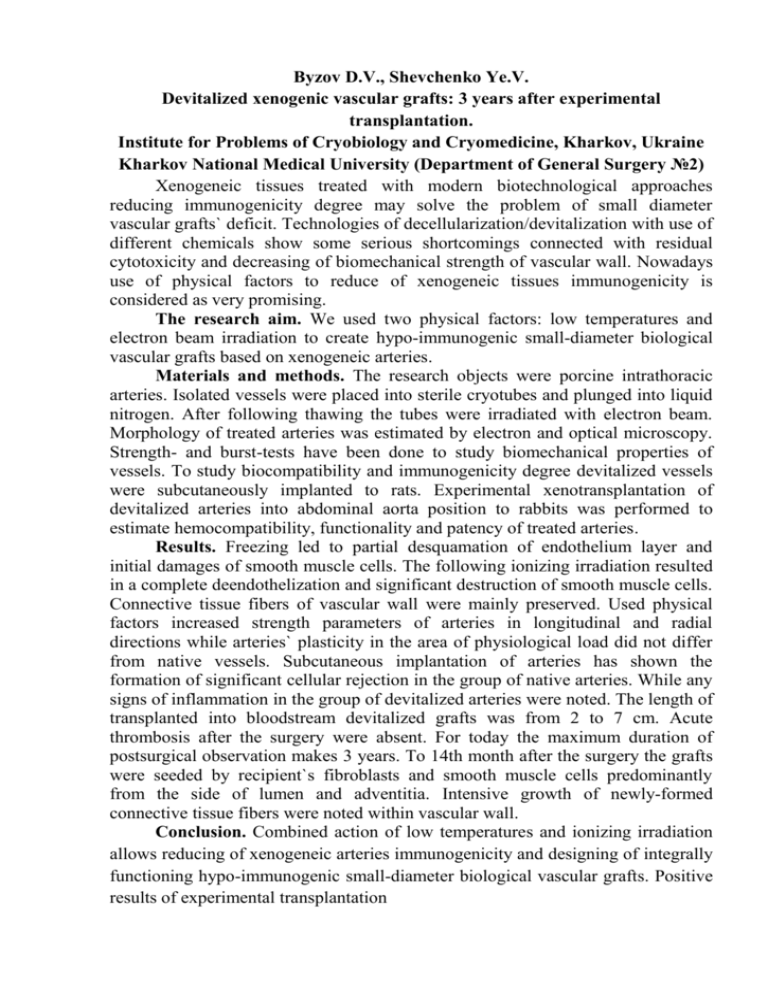
Byzov D.V., Shevchenko Ye.V. Devitalized xenogenic vascular grafts: 3 years after experimental transplantation. Institute for Problems of Cryobiology and Cryomedicine, Kharkov, Ukraine Kharkov National Medical University (Department of General Surgery №2) Xenogeneic tissues treated with modern biotechnological approaches reducing immunogenicity degree may solve the problem of small diameter vascular grafts` deficit. Technologies of decellularization/devitalization with use of different chemicals show some serious shortcomings connected with residual cytotoxicity and decreasing of biomechanical strength of vascular wall. Nowadays use of physical factors to reduce of xenogeneic tissues immunogenicity is considered as very promising. The research aim. We used two physical factors: low temperatures and electron beam irradiation to create hypo-immunogenic small-diameter biological vascular grafts based on xenogeneic arteries. Materials and methods. The research objects were porcine intrathoracic arteries. Isolated vessels were placed into sterile cryotubes and plunged into liquid nitrogen. After following thawing the tubes were irradiated with electron beam. Morphology of treated arteries was estimated by electron and optical microscopy. Strength- and burst-tests have been done to study biomechanical properties of vessels. To study biocompatibility and immunogenicity degree devitalized vessels were subcutaneously implanted to rats. Experimental xenotransplantation of devitalized arteries into abdominal aorta position to rabbits was performed to estimate hemocompatibility, functionality and patency of treated arteries. Results. Freezing led to partial desquamation of endothelium layer and initial damages of smooth muscle cells. The following ionizing irradiation resulted in a complete deendothelization and significant destruction of smooth muscle cells. Connective tissue fibers of vascular wall were mainly preserved. Used physical factors increased strength parameters of arteries in longitudinal and radial directions while arteries` plasticity in the area of physiological load did not differ from native vessels. Subcutaneous implantation of arteries has shown the formation of significant cellular rejection in the group of native arteries. While any signs of inflammation in the group of devitalized arteries were noted. The length of transplanted into bloodstream devitalized grafts was from 2 to 7 cm. Acute thrombosis after the surgery were absent. For today the maximum duration of postsurgical observation makes 3 years. To 14th month after the surgery the grafts were seeded by recipient`s fibroblasts and smooth muscle cells predominantly from the side of lumen and adventitia. Intensive growth of newly-formed connective tissue fibers were noted within vascular wall. Conclusion. Combined action of low temperatures and ionizing irradiation allows reducing of xenogeneic arteries immunogenicity and designing of integrally functioning hypo-immunogenic small-diameter biological vascular grafts. Positive results of experimental transplantation

